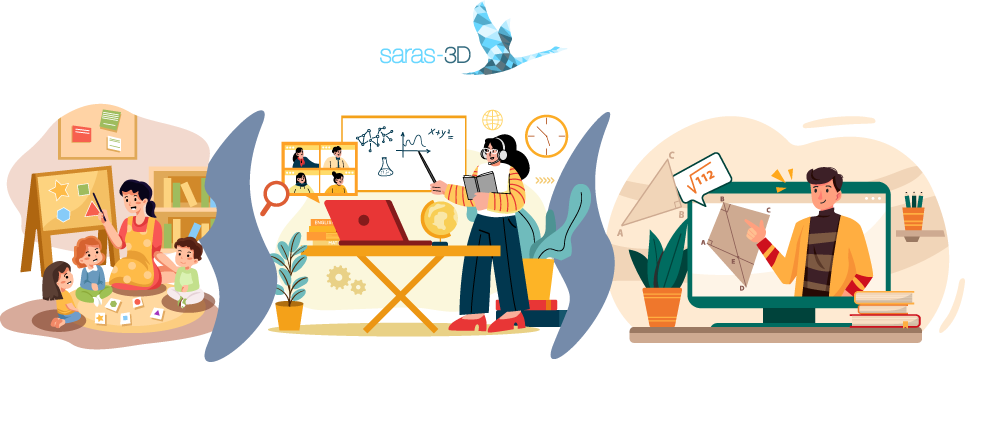BLOGS
At Saras, our mission is to ensure that all the students are given an opportunity to reach their full potential. We are passionate about creating and encouraging tomorrow’s innovators and problem solvers and make high quality education available to all.

India's Transition to Digital Teaching
As the world rapidly advances into the age of digital technology, India is no exception. In fact, in recent years, India has embarked on a journey towards digitalization, and this has significantly impacted the education sector of the country. Digital teaching has become a force to be reckoned with, as traditional teaching methods are evolving into more interactive, seamless, and engaging forms of learning.
The Indian government has played a crucial role in digitizing education in the country. Its Digital India initiative focuses on extending the benefits of technology to every part of society, including education. It aims to improve the quality of education by integrating technology in every aspect of teaching, from curriculum design to customizable learning experiences.
India's transition to digital teaching is crucial. For one, it has the power to significantly increase the accessibility of education. With the help of technology, students in remote areas of the country will have access to the same quality of education as their urban counterparts. This is leading to a more balanced and equitable education system in the country.
Digital teaching platforms like Saras-3D enable educators to customize teaching methods according to their students' learning styles. Digital tools such as online assessments, immersive simulations, and interactive videos are revolutionizing the way knowledge is imparted, making learning more engaging and effective for students.
Interactive Teaching
One significant advantage of digital teaching is that it encourages interactive and collaborative learning. Teachers can leverage digital tools to make the curriculum more relevant and practical by designing interactive classes that incorporate real-life scenarios. For instance, students can participate in virtual simulations, where they can collaborate with their peers in tackling complex issues and come up with practical solutions.
Personalized Learning Experience
Digital teaching also allows for personalized learning experiences as students progress through their course materials at a pace that suits them. Concepts that are difficult to grasp can be revisited or taught in different ways until the student fully comprehends them. Teachers also have access to metrics that allow them to track students' progress and identify areas where they're struggling, enabling them to offer personalized assistance.
More Effective Learning
Digital teaching tools, such as 3D video presentations, help to break down complex topics into simpler concepts, making learning easier and more effective. By focusing on concepts, the fundamentals are thoroughly understood and remembered long term. Students no longer have to rely on rote memorization to cram for a test, only to forget the information moments later. This broadens students' perspectives, allowing them to tackle real-world problems and acquire skills needed for the future.
In conclusion, India's transition to digital teaching is a testament to the power of technology in education. With the help of digital teaching platforms, India is able to make education accessible, equitable, and engaging for students across the country. As the country continues to develop its digital infrastructure and invest in education, it is poised to become a global leader in digital learning. Learn more about Genius 3D Learning here.
BACK